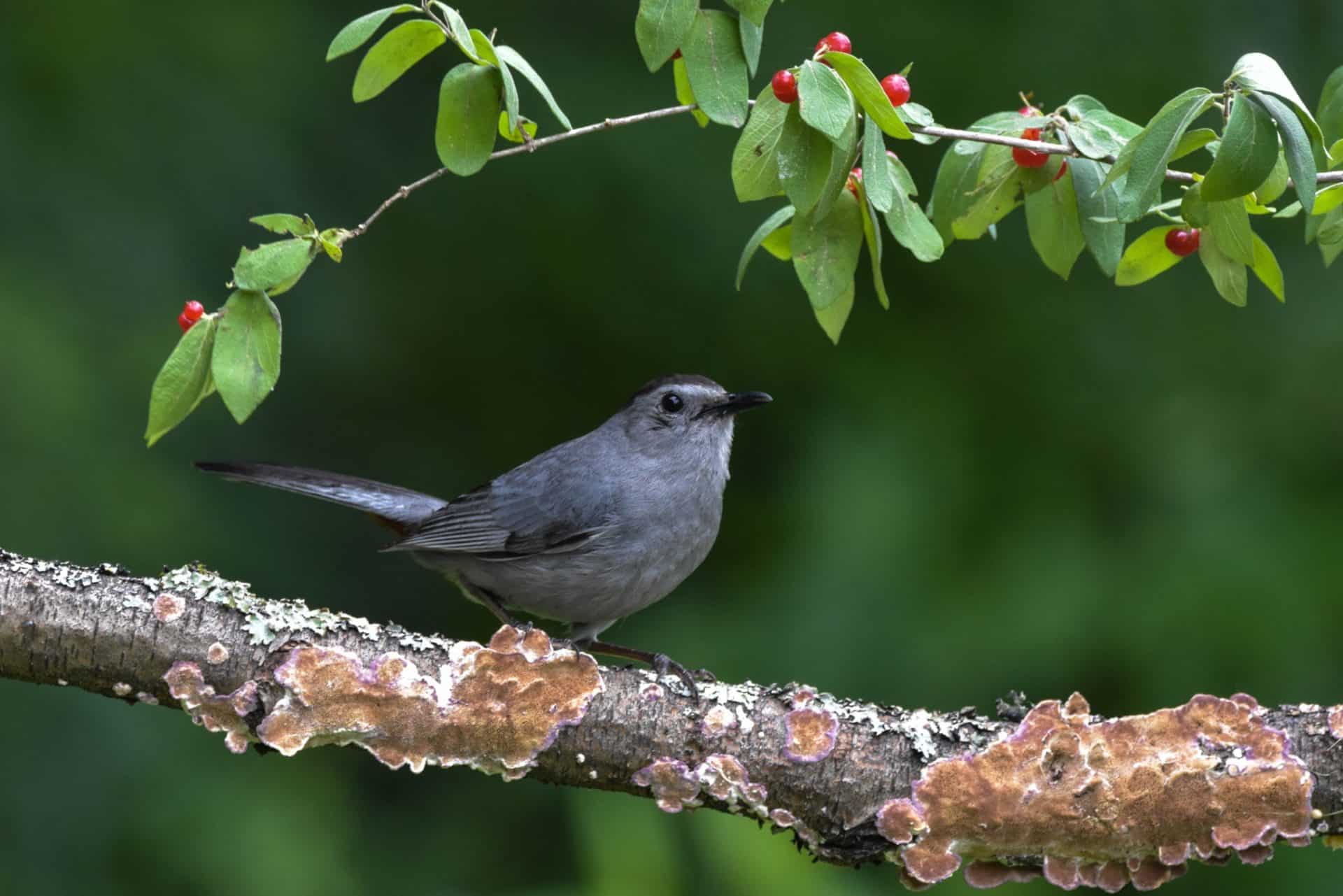Birds
Gray Catbird
Dumetella carolinensis

Just as their common name implies, gray catbirds are gray in color and have a call which sounds like a cat’s mew. They belong to the genus Dumetella, which means “small thicket.” Both their summer and winter habitat are composed of thickets of shrubs and vines around forest edges, clearings, along roadsides, fencerows, abandoned farmland and streamsides where dense vegetation is present.
Gray catbirds forage in treetops and on the ground. In early summer they eat primarily insects including ants, beetles, grasshoppers, midges, caterpillars, moths, spiders and aphids. However in the fall and winter more than half the annual diet of adults are small fruits including holly (ilex), cherry (prunus), elderberry (adoxaceae), poison ivy (anacardiaceae), greenbrier (smilax), and blackberry (rosaceae). They will on occasion forage at feeders.
Breeding season for gray catbirds usually begins in early May and ends by early August. Male catbirds are territorial. They announce their territory with a loud song. Songs can be up to ten minutes long and include weak mimics of other sounds in their territory. Gray catbirds are also very aggressive with territory intruders including other birds. They will fluff up their breast and rump their feathers, flash their wings and tails at intruders including predators. They will attack if defending an active nest.
Gray catbirds can raise two broods per season. Females build nests in five to six days. Bulky cup nests are made from twigs, straw, bark, mud and sometimes trash. Nests are hidden four feet to sixty feet from the ground on horizontal branches near the center of dense shrubs, small trees or vines. Common nesting plants include dogwood (cornaceae), hawthorn (rosaceae), cherry (prunus), rose (rosaceae), elderberry (adoxaceae), grape (vitaceue), honeysuckle (caprifoliaceae), and blackberry (rosaceae).
Female gray catbirds lay three to five, usually four, deep blue or greenish-blue eggs. Females incubate the eggs twelve-fourteen days. Gray catbirds are one of only a few bird species that can recognize foreign brown-headed cowbird eggs in their nest. They will remove the cowbird eggs from the nest before the cowbirds hatch. Young are helpless and rely on both parents to feed them. Chicks leave the nest ten to eleven days after hatching. Parents continue to feed the fledglings for up to twenty four days.
According to the North American Breeding Bird Survey gray catbirds populations are relatively stable overall. Populations have slightly declined in the southeastern U.S. and an increase in the northeastern U.S. Gray catbirds preference for early-succession habitat helps them to do well in human-altered landscape however rapid development of coastal winter habitats could be a concern in the future.
Best Location to View: Blueberry Pond, Display Garden
Color: Male and female alike; body entirely dark gray, with black cap, black tail, and chestnut under tail coverts.
Range: Breeds east of Rocky Mountains and in southern Canada. Winters in the extreme southeastern United States, along the east coast of Mexico, and in the Caribbean Islands.
Size: 8.3–9.4"
Wingspan: 8.7–11.8"



